The start of the Premier League season has seen two teams flourish defensively with one of football’s riskiest yet most effective tactics.
Brighton, under new manager Fabian
Hürzeler’s tactics, has started to play an incredibly high defensive line, which has ledto them catching more opponents offside than any other team in the Premier League this season.
Tottenham have also continued to use this under Ange Postecoglou’s tactics after having the fifth-highest line and catching the second-highest amount of opponents offside in the 2023/24 season.
Currently, Brighton and Tottenham are second and third in the rankings for the highest defensive line in the Premier League, respectively.
As both teams faced each other on Sunday, a battle took place to see how they would counteract a side that deployed a similar defensive setup.
This tactical theory and tactical analysis will first highlight how both sides have used their high line to gain a defensive advantage over their opponents.
We will then consider the system’s pitfalls and how both teams have been exploited this season by using the high line.
Finally, a brief analysis of the side’s encounter will be carried out, highlighting which side was able to overcome the high line best against the other.
What Are The Advantage Of Using A High Defensive Line?
Many football fans wince at the idea of their side playing with a ridiculously high line.
They envisage countless balls being played over and through their defence, finding a pacey run of an opposition forward.
Yet, why is it that some of football’s brightest minds tend to employ a tactic that could be costly if not used correctly?
The first reason is the necessity of this tactic for teams that wish to press high.
This season, Tottenham has the highest number of tackles in the attacking third, which shows their ability to press.
If a side like Tottenham wants to be aggressive when defending and prevent a team from playing out from the back, the whole team must make a unified effort.
If a team’s defensive players don’t move with the pressing pack, it leaves massive gaps that a team with quality will be able to play through.
The benefit of the high defensive line in these situations is that it significantly restricts the space between the lines, limiting the opposing team’s opportunities to play passes through the thirds.
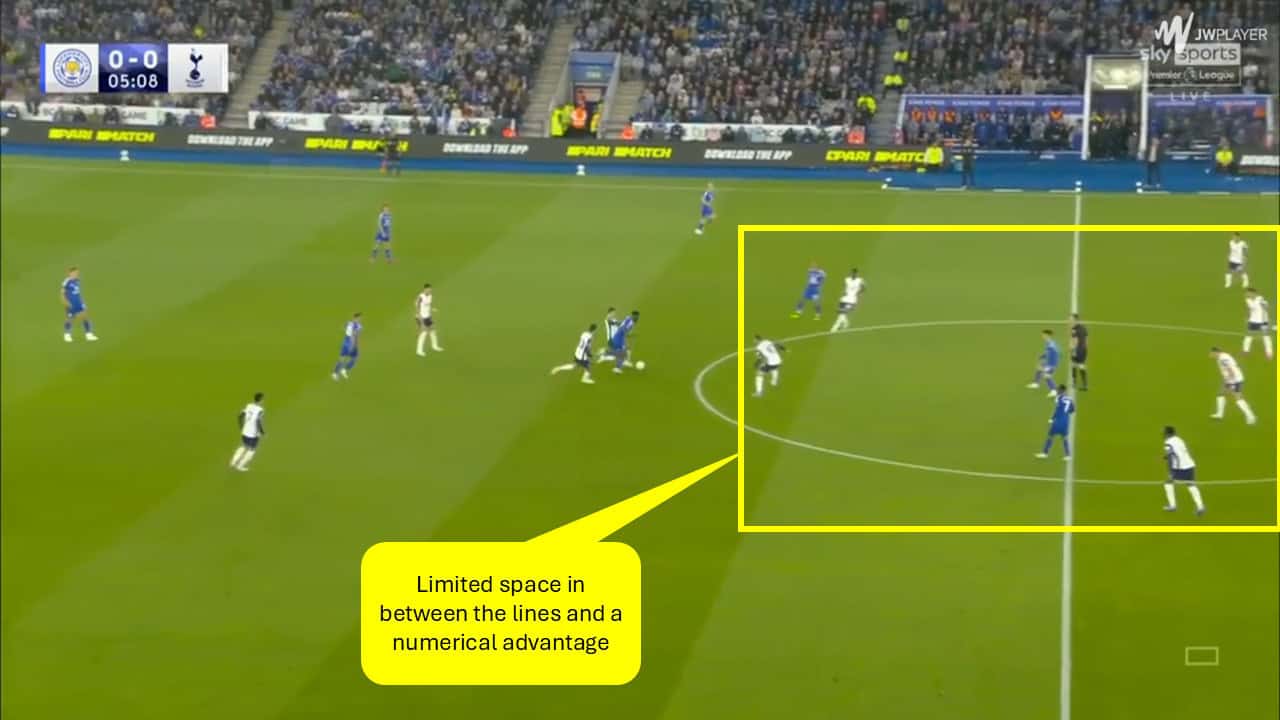
Here, we see Leicester have progressed into the middle of the pitch against Tottenham.
However, Tottenham’s compactness makes it hard for a successful forward pass to be played.
Tottenham have had the second-fewest progressive passes against them, and Brighton follow closely behind with the third-lowest in this statistic.
It’s incredibly difficult to play through these sides, and it’s hard to play over teams with a high line.
Making the final pass in behind an opponent with a high line requires a greater level of technical ability than most people perceive.
Despite the enormous amounts of space behind the defence, the weight of the pass has to be perfect.
Underhit the pass, and the defensive line will have time to recover and stop the attack.
Overhitting the pass will lead to the goalkeeper coming out and clearing the danger.
A perfectly timed forward run and a pinpoint pass must be made.
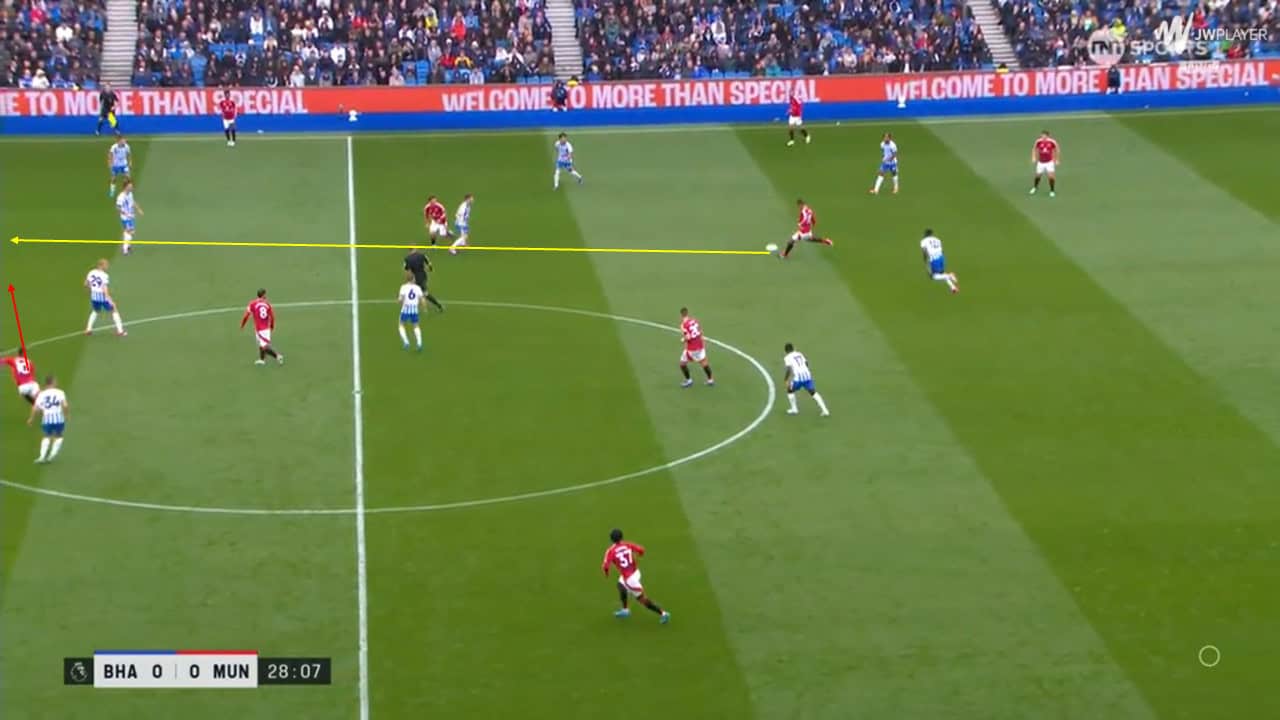
In this situation, Casemiro looks to play the ball over the top of Brighton’s defence.
Brighton’s defensive line recognises this and stands its ground, leading to the intended target being offside.
Both Brighton and Tottenham have conceded the fewest passes into the final third and the fewest touches by opposition players in their defensive third, highlighting the difficult task of getting in behind both defences.
Requirements For A Successful High Defensive Line
There are several steps to ensuring that playing a high line is successful.
The first essential step is that each individual in the high line is always ready to run back towards their own goal.
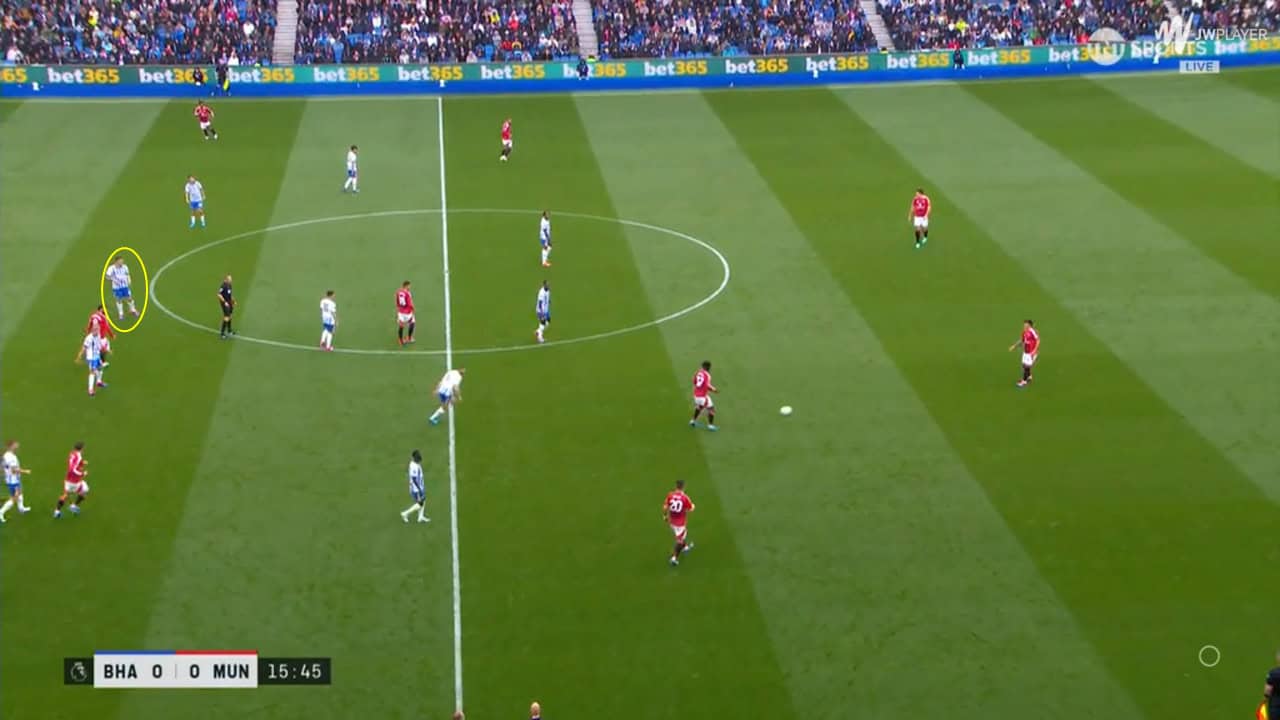
Here, it’s evident from Lewis Dunk’s body position that he’s ready for any ball that may be played over the top of his defence.
Standing side-on will give him the best chance of recovering quickly, rather than being caught flat-footed and having to do a 180-degree turn to recover.
The next important step is to know when to drop and when to hold the line.
As seen in Marcus Rashford’s example of running offside, the Brighton defence decided to hold their line collectively.
This is possible due to the proximity of where Rashford began his run.
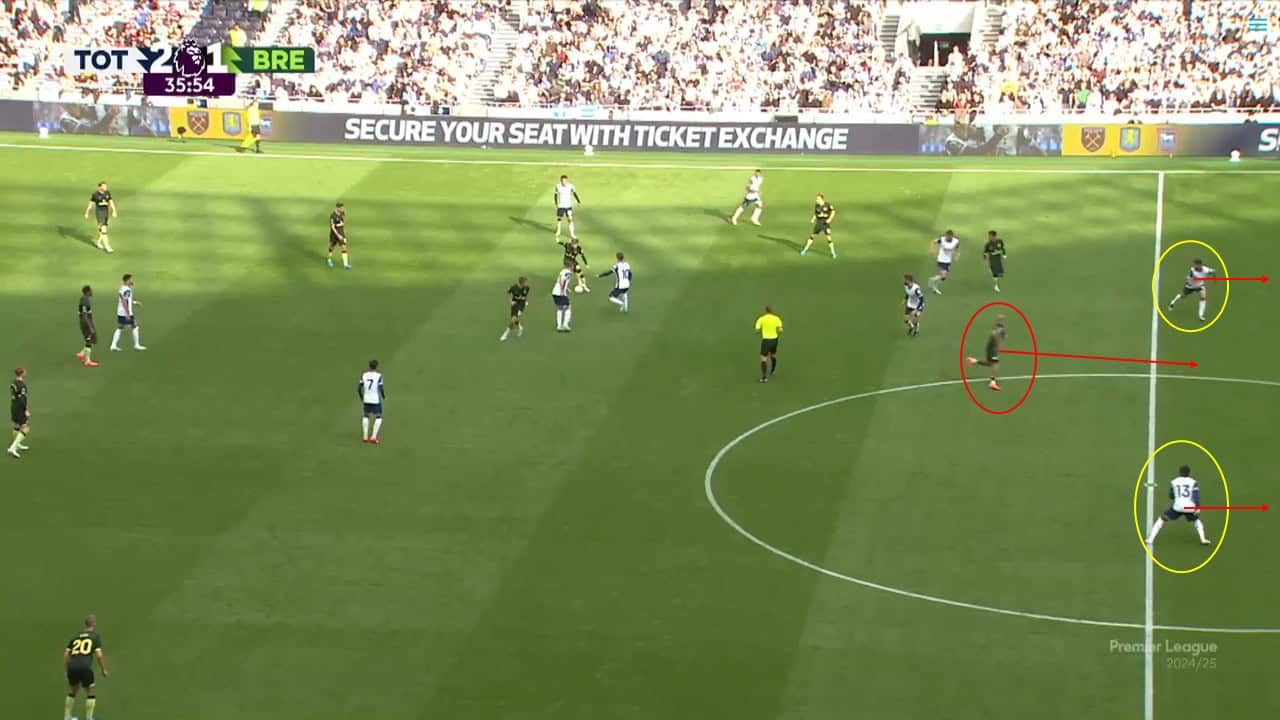
However, in this situation, Tottenham’s defenders decided to drop.
The reasoning behind this is where the run is being made from.
Brentford forward Mbemuo is making a run from deep.
If Tottenham hold their line and a pass is played through to the forward, he’ll be onside by a considerable distance.
That’s why Romero and Destiny Udogie have decided to run back to their own goal.
Another trigger to drop is when there’s no pressure on the opponent with the ball.
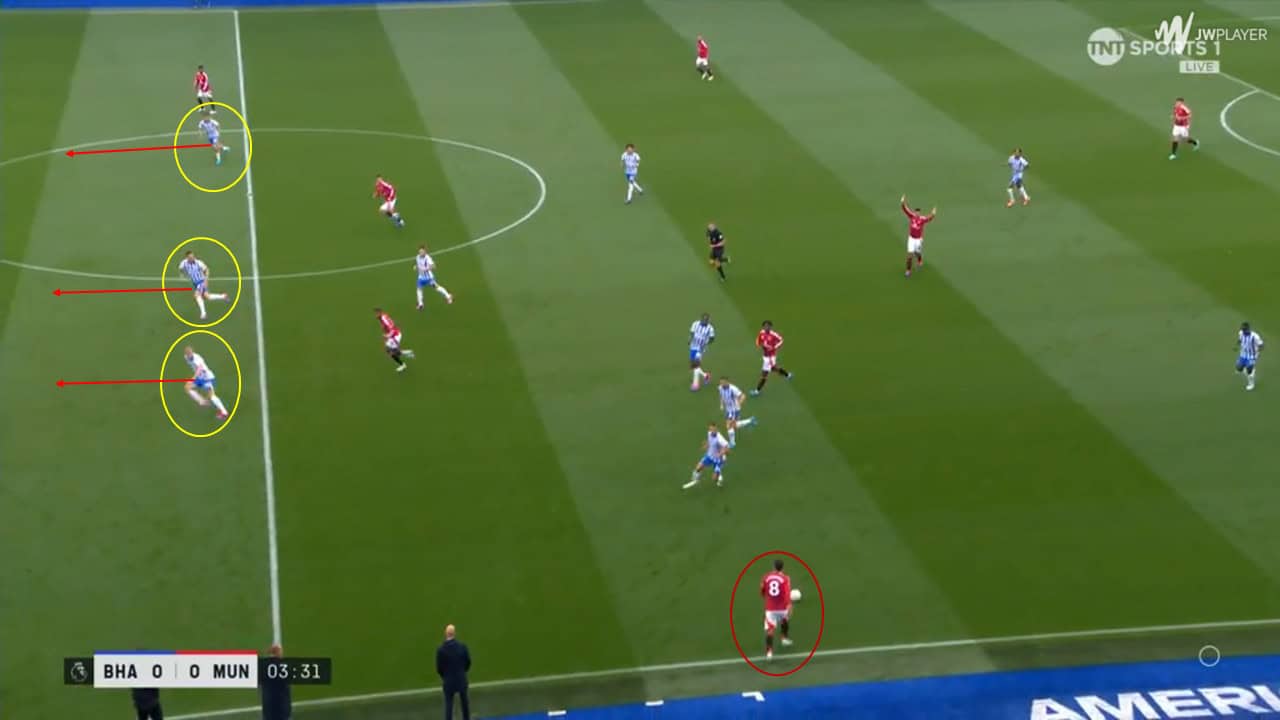
Here, Bruno Fernandes has pulled out wide and has escaped marking.
Brighton’s defenders quickly drop as the ball travels to him, sensing the danger of a player of Fernandes’ quality having space to play a ball over the top of their defence.
The final step is the need for cover.
As can happen from time to time when deploying this tactic, the trap of the high line doesn’t always work, and adequate cover must be provided when balls are played over and through the high line.
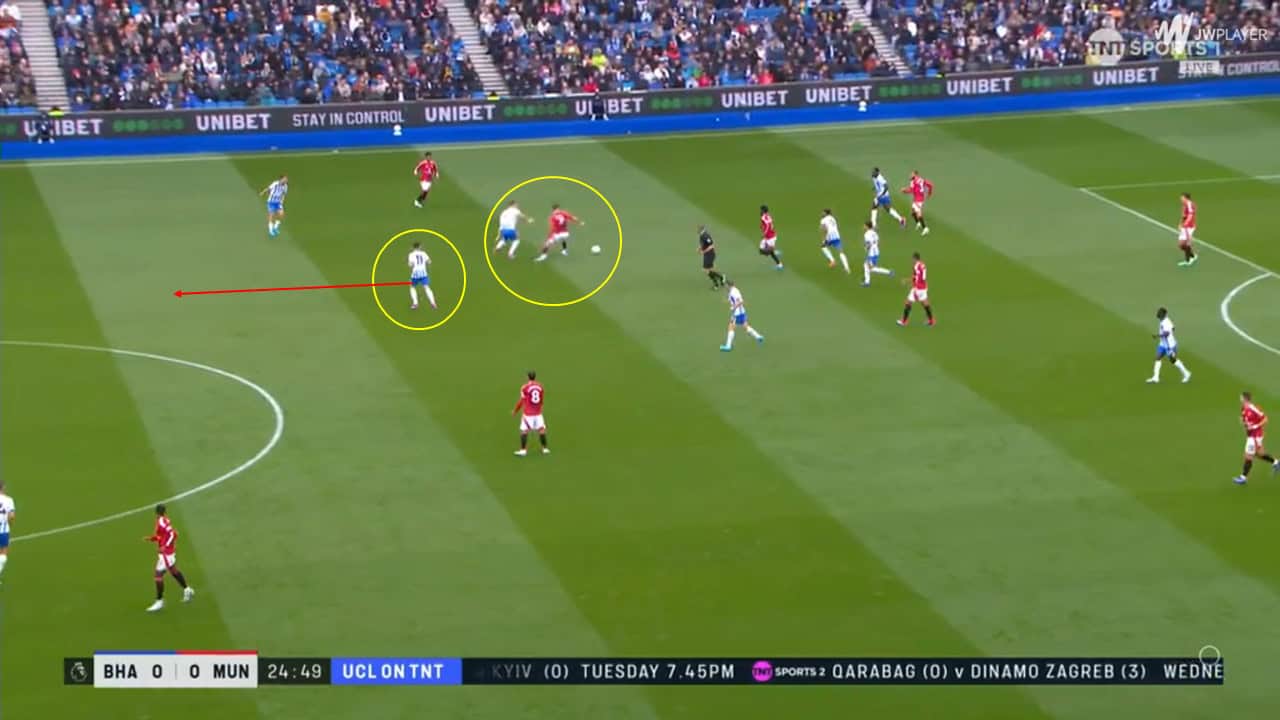
Here, Brighton’s Lewis Dunk has pressed incredibly aggressively, leading to his leaving his area vacated.
Despite the benefit of this action from Dunk to force the ball away from goal, a dangerous forward run could be made in the space Dunk left.
Billy Gilmour reads this, and the defensive midfielder drops in to provide cover.
Tottenham are also highly effective at covering for one another when the ball can find its way over their defence.
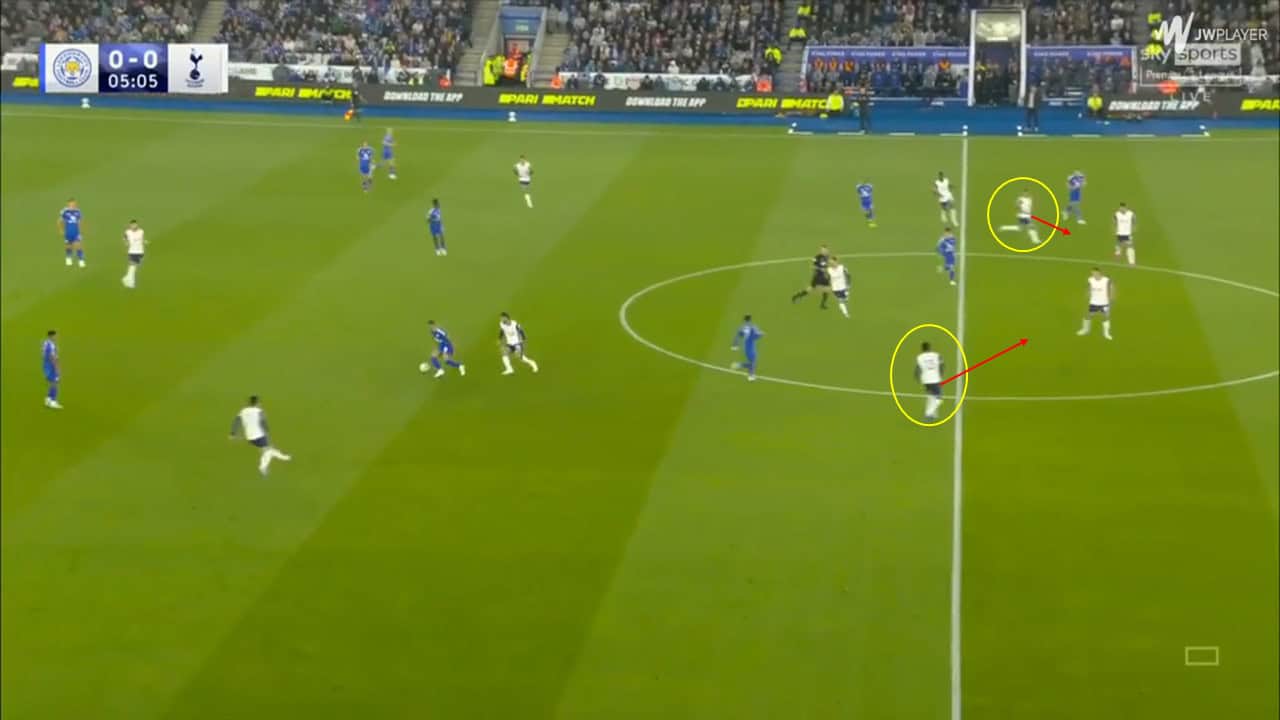
Tottenham have lost the ball.
The full-backs, Udogie and Porro, quickly recover into their backline and make the pitch very tight.
This means that neither of Tottenham’s centre-backs will be isolated when the ball is played over the top of the defence, giving adequate cover if needed.
Downfall Of A High Defensive Line
As discussed, a high line won’t always work.
Teams work all week to overcome their opposition’s strengths, as seen against Tottenham and Brighton this season.
The most straightforward reason a high line is unsuccessful is that the team fails to deploy it quickly to put pressure on the ball high up the pitch.
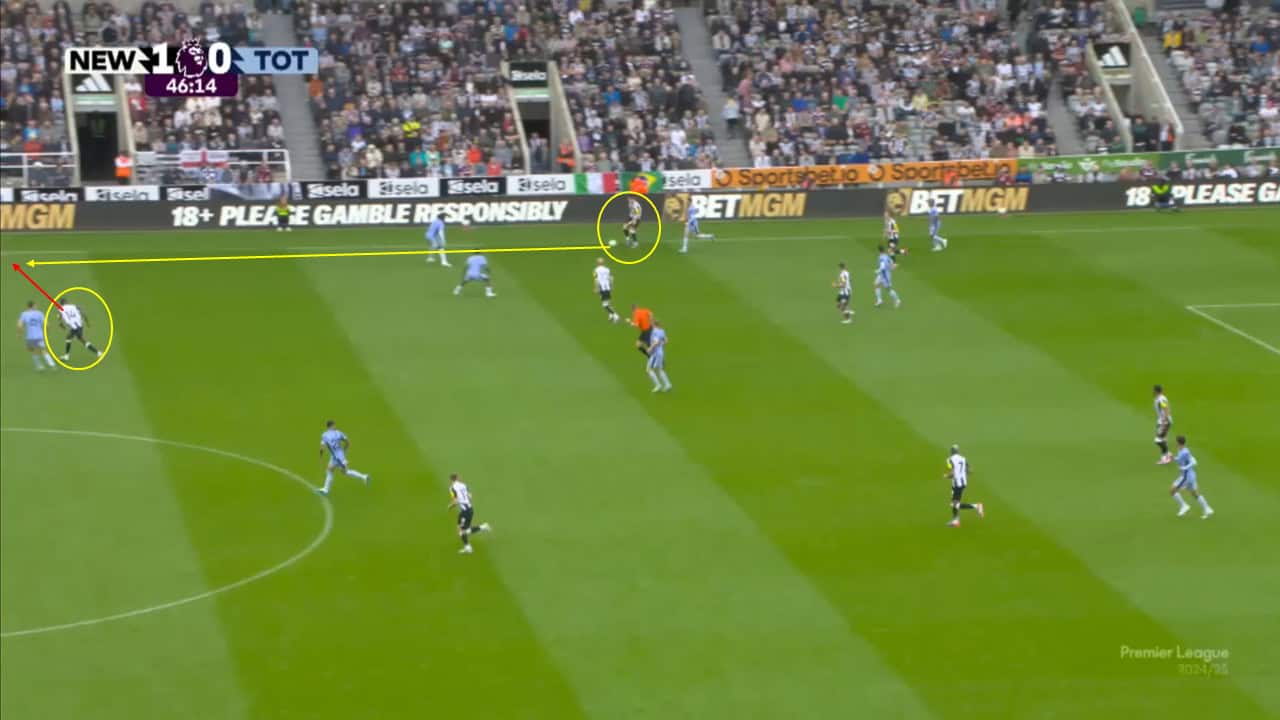
In this situation, Newcastle have possession in the middle third of the pitch.
There’s little effort from Tottenham to put pressure on the ball.
Alexander Isak darts in behind the defence, and a perfect ball is played behind him.
The failure to press the player on the ball allowed Newcastle to play what would have been an impossible pass if they were under pressure.
Yet despite teams’ best will to get out quickly and press the opposition, there are ways and means of overcoming even the most structured presses.
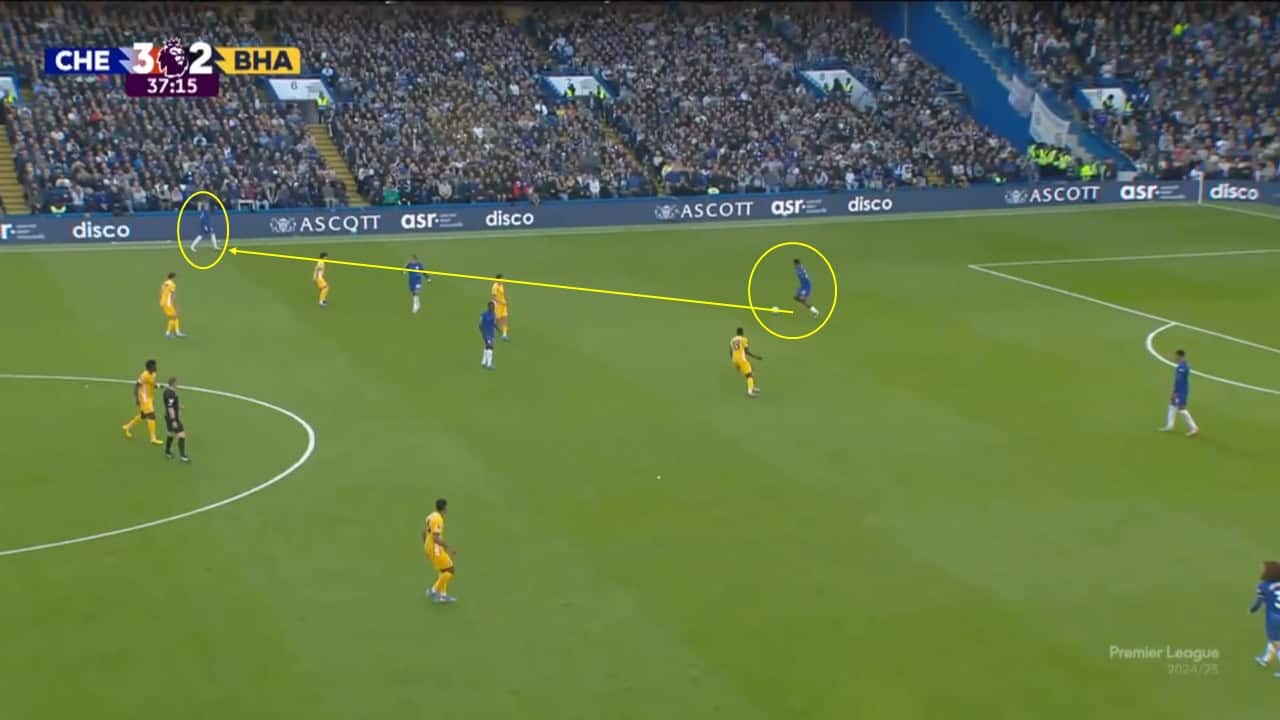
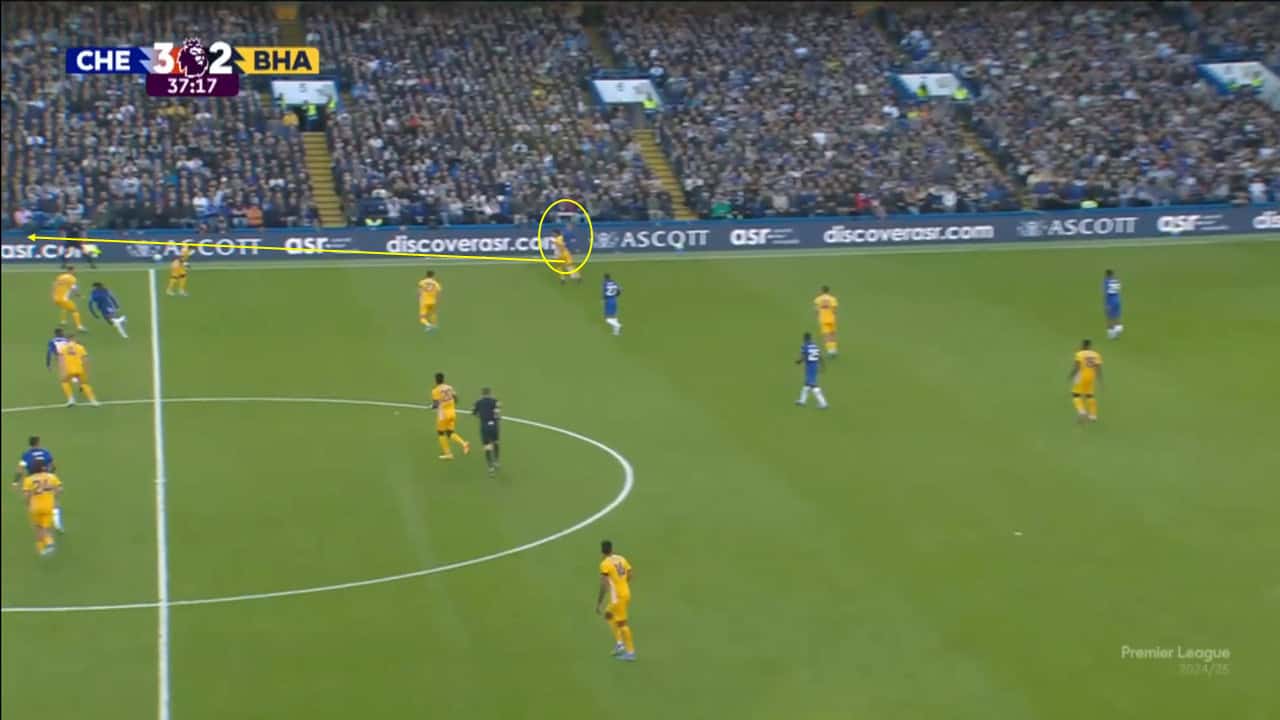
Here, Cole Palmer has moved out wide in a deep position.
The ball is played to him in a seemingly undangerous position.
However, Palmer plays a first-time ball over the top of Brighton’s defence, who haven’t had a chance to react to the lack of adequate pressure on Palmer and drop.
This leads to Chelsea getting through on goal and having a clear opportunity.
Similarly, the use of a third-man run can be used as a tactic to overcome a high line.
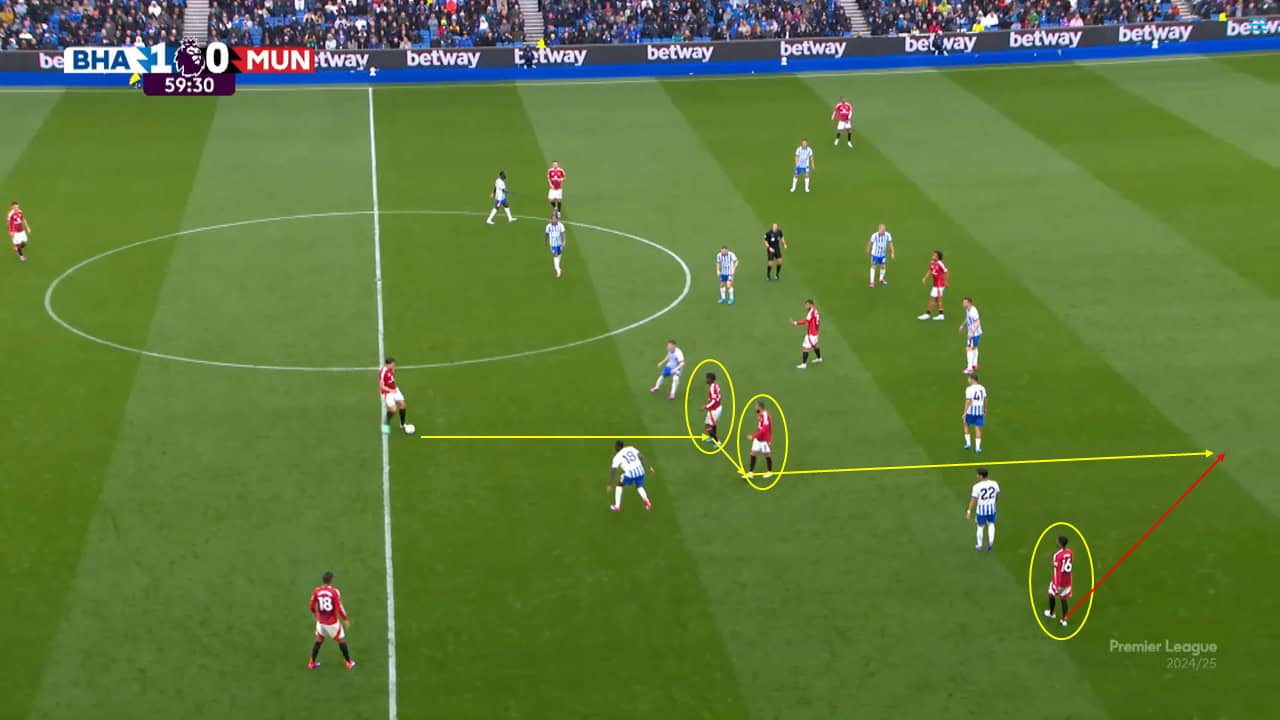
In this situation, Mazraoui has dropped into the half-space with Kobbie Mainoo.
Despite this seeming awkward, with the two players almost on top of each other, it causes real danger.
Mainoo is found and quickly lays the ball off to Mazraoui, who’s facing the goal and can play a pass in behind Brighton’s defence to Diallo before the Seagull’s defence can even react.
Man United do eventually break forward and score from this situation.
This is one of two goals that Brighton has conceded from third-man runs this year.
When the ball does break in, behind the danger, players who were due to provide cover are unable to do so.
As previously sighted, Tottenham’s system requires their full-backs to tuck in tight to their centre-backs.
However, with Postecoglou using his full-backs in a front five when attacking, they have to cover a lot of ground to get back in and support their defence.
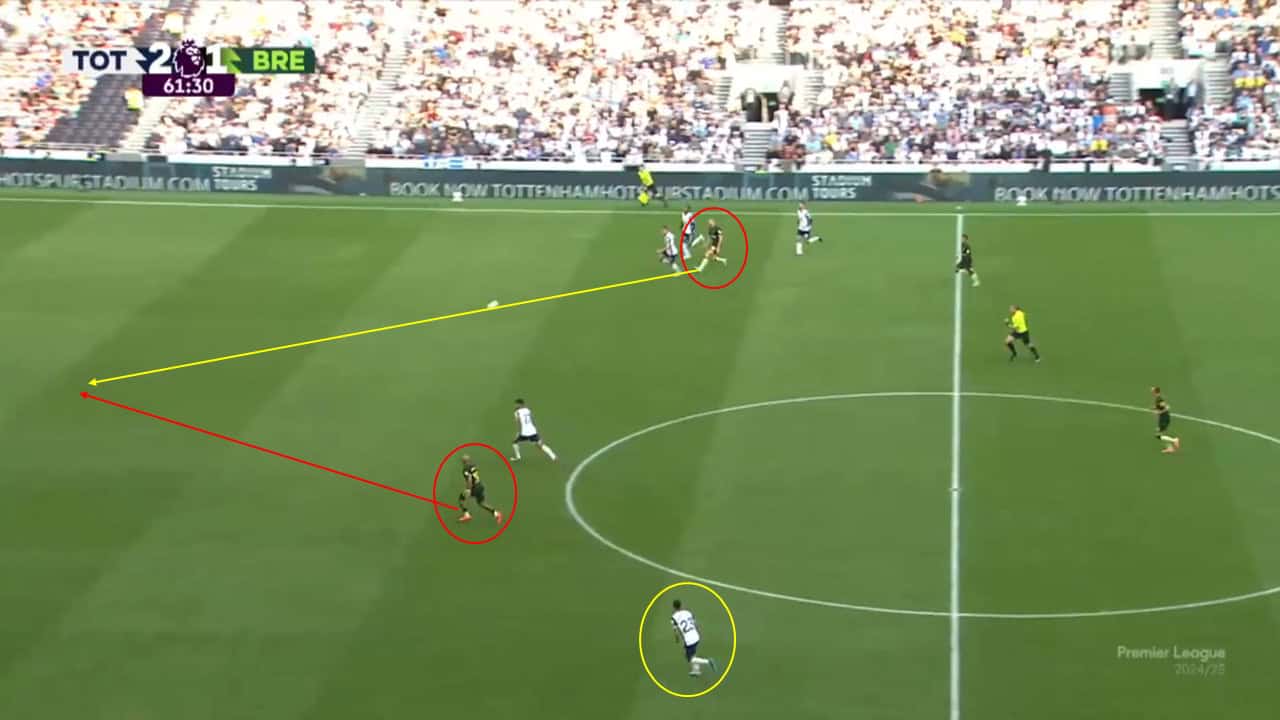
Here, Brentford have managed to break in behind Tottenham’s backline.
As the defenders try to recover, a ball is played through to Mbeumo, who’s beaten Romero.
Pedro Porro is unable to recover in time to provide adequate coverage, allowing Mbeumo to have a free shot on goal.
How The Brighton Vs Tottenham Match Unfolded
In what was a thrilling game, Brighton made an incredible comeback to win 3-2.
Both teams had clearly worked on a variety of ways to overcome each other’s high lines.
The first notable tactic that Spurs had deployed was runs from deep.
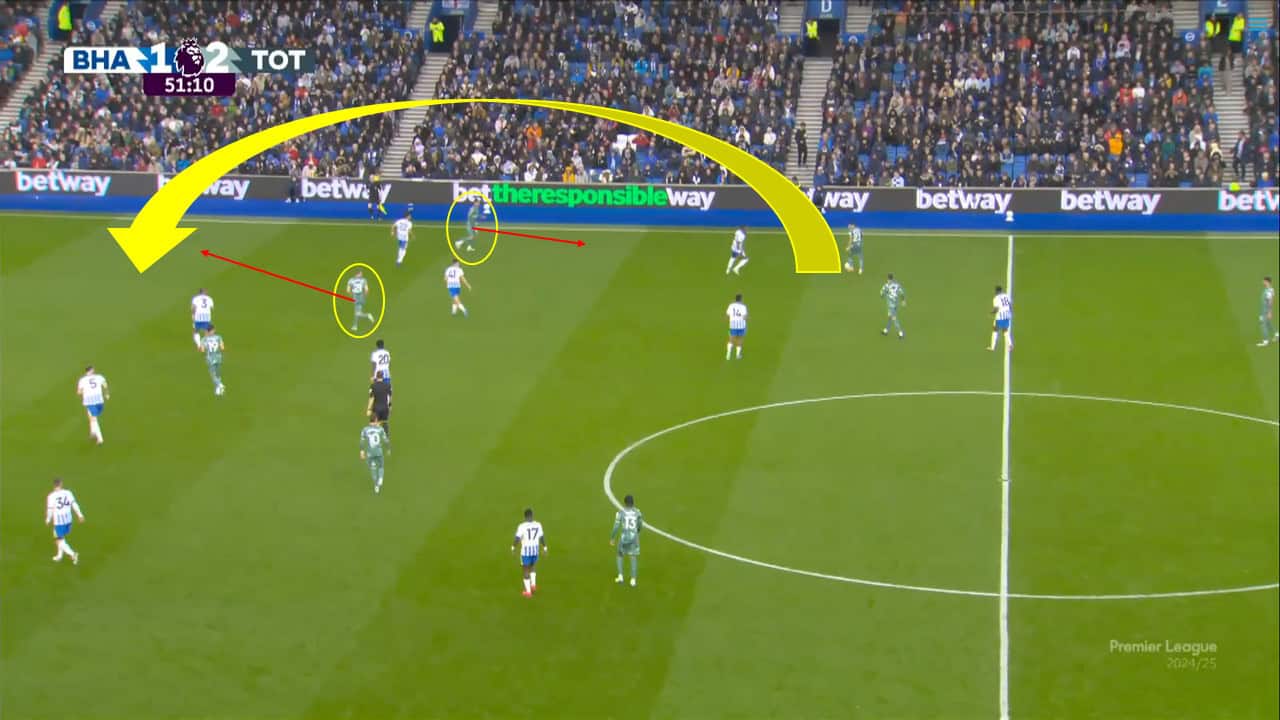
In this situation, Brennan Johnson drops deep to receive the ball at his feet.
He’s closely followed by left back, Kadıoğlu.
This is spotted by Dejan Kulasevski, who makes a run from deep into the space that’s been vacated, allowing him to progress to Brighton’s final third.
Tottenham also were clever in how they used centre-forward Dominic Solanke.
On several occasions, particularly in transition, Solanke would drop off Brighton’s centre-backs.
Due to a transition occurring, it was too much of a risk for either of Brighton’s central defenders to engage with the English striker.
This gave Solanke time and space to pick out clever diagonal runs made by Tottenham’s wingers.
A clear example was during Tottenham’s first goal.
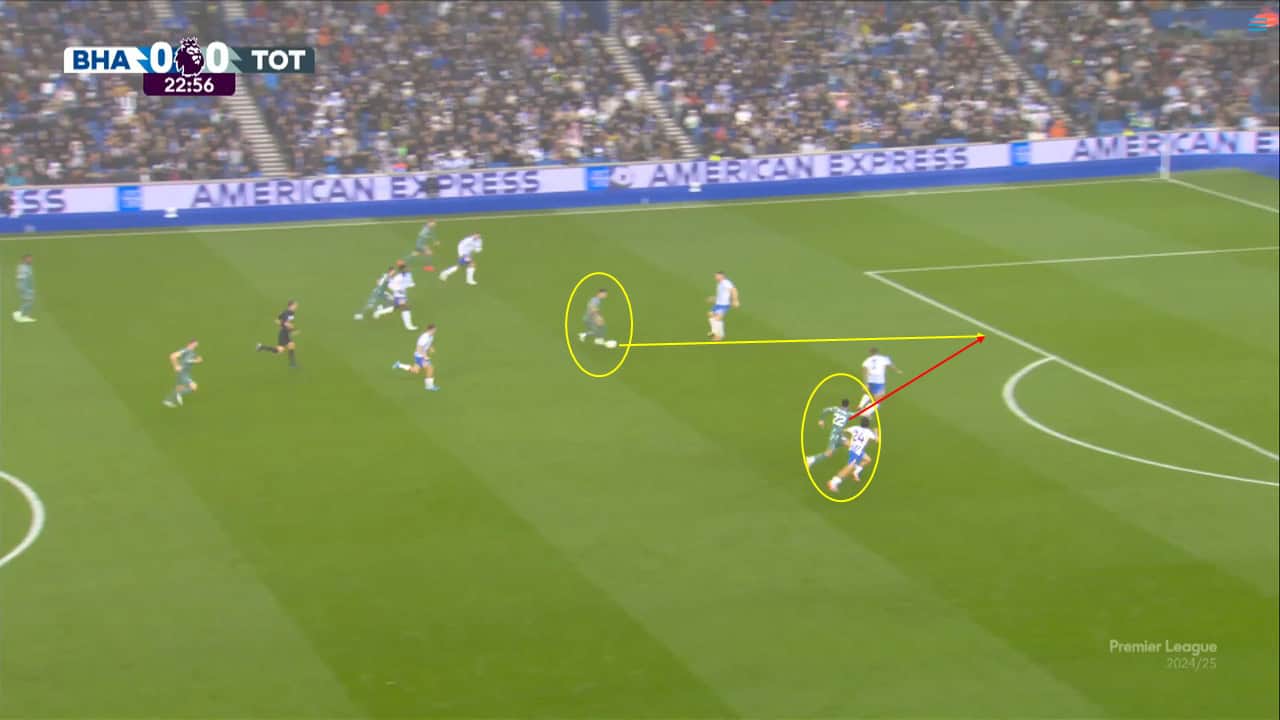
Solanke receives the ball on the half-turn before dribbling on and playing an excellent through ball to Johnson, who slides the ball past the goalkeeper.
Another devastating tactic that helped both teams overcome the offside trap was the forward runs made in the half-spaces.
Underlapping and parallel runs caused a number of problems for both defences.
These types of runs are so hard to defend due to the run being made on the full-back’s blindside and the closest centre-back being too far away to track the run.
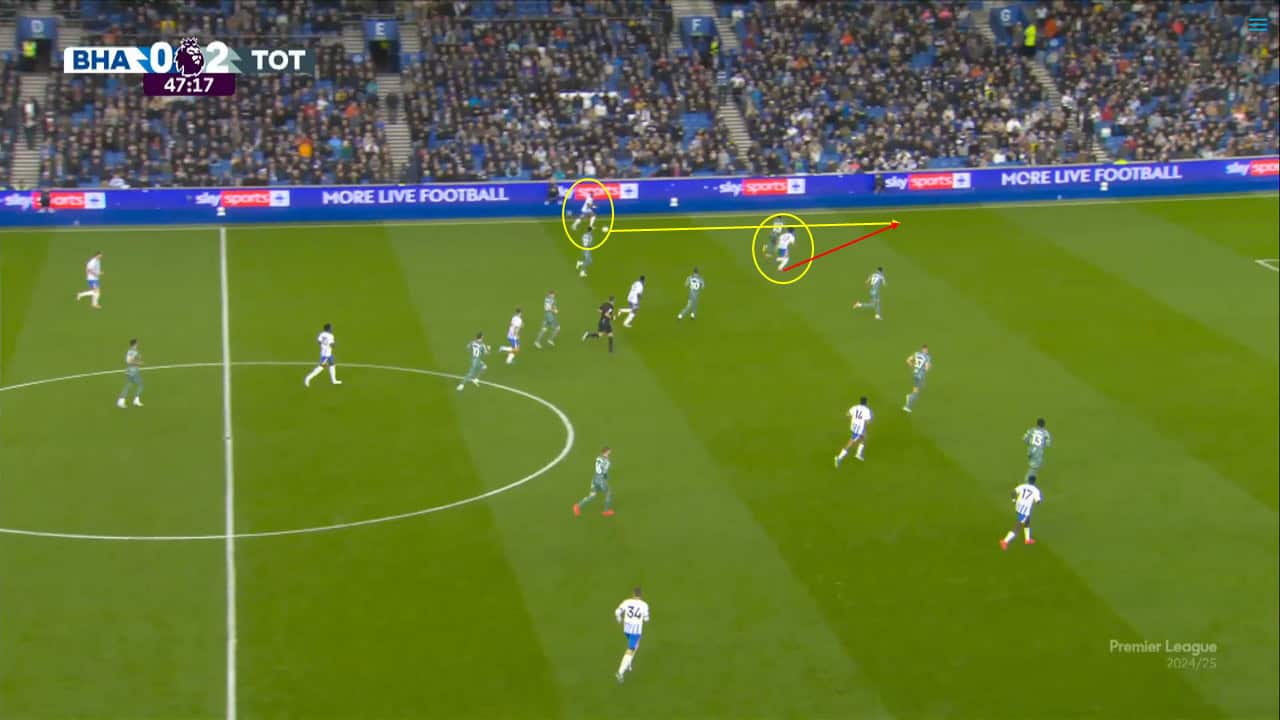
Here, Mitoma makes an in-to-out run, which sees him released into the final third.
There, he delivers a cross that eventually leads to Brighton’s first goal.
Conclusion
It’s evident that both Brighton and Tottenham have had a considerable amount of success with their high lines.
However, both teams have clearly suffered from the risk associated with deploying such a tactic.
It will be interesting to see how both teams seek to refine their defensive strategy over the season and what implications it will have on the success of both teams.

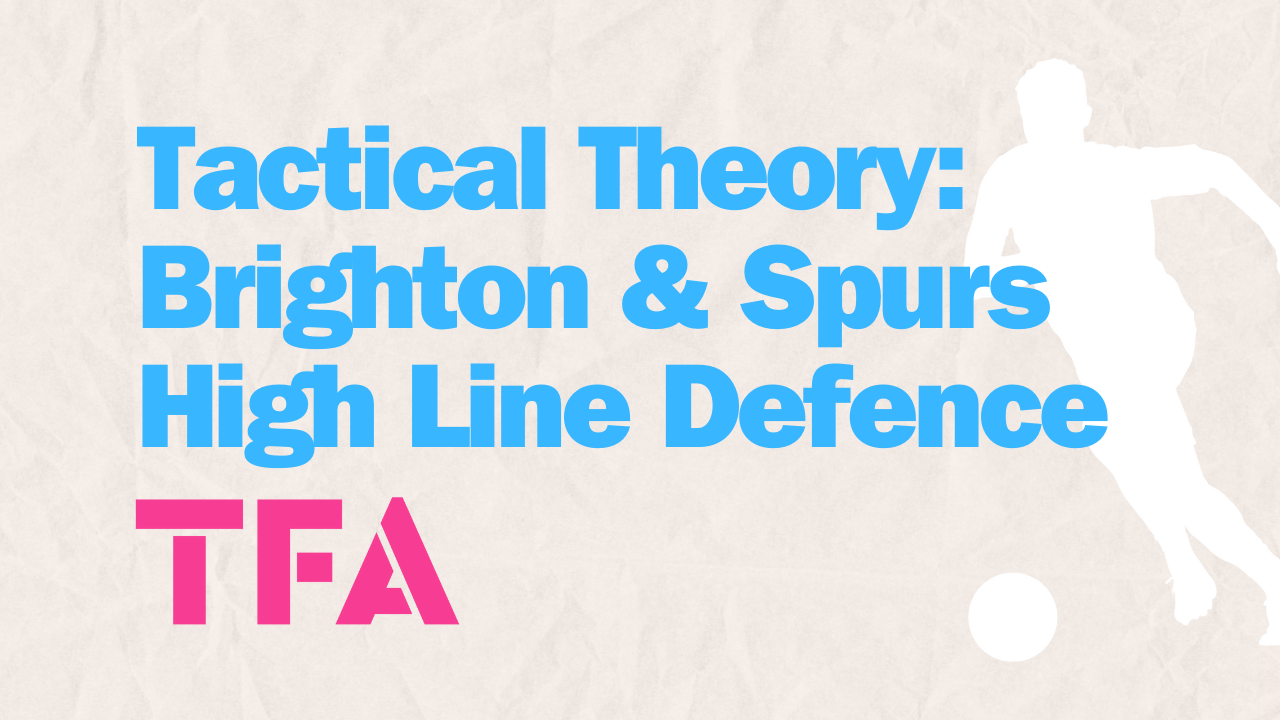



Comments